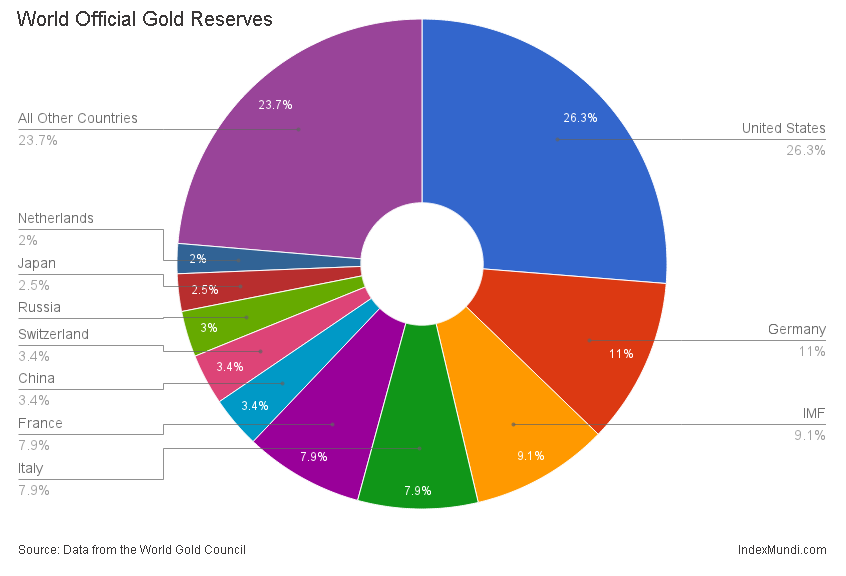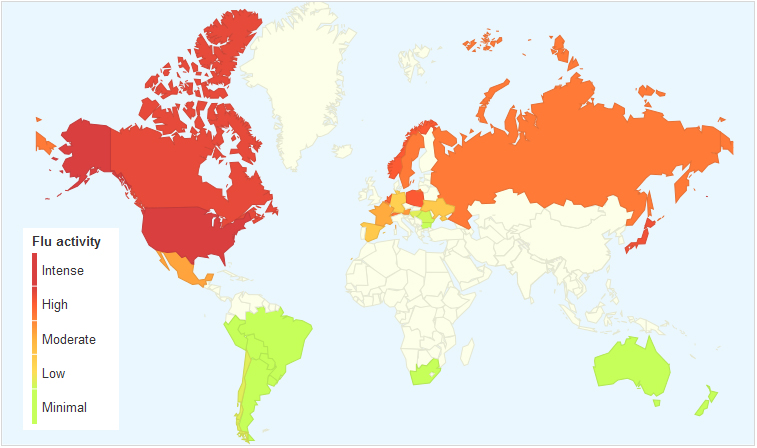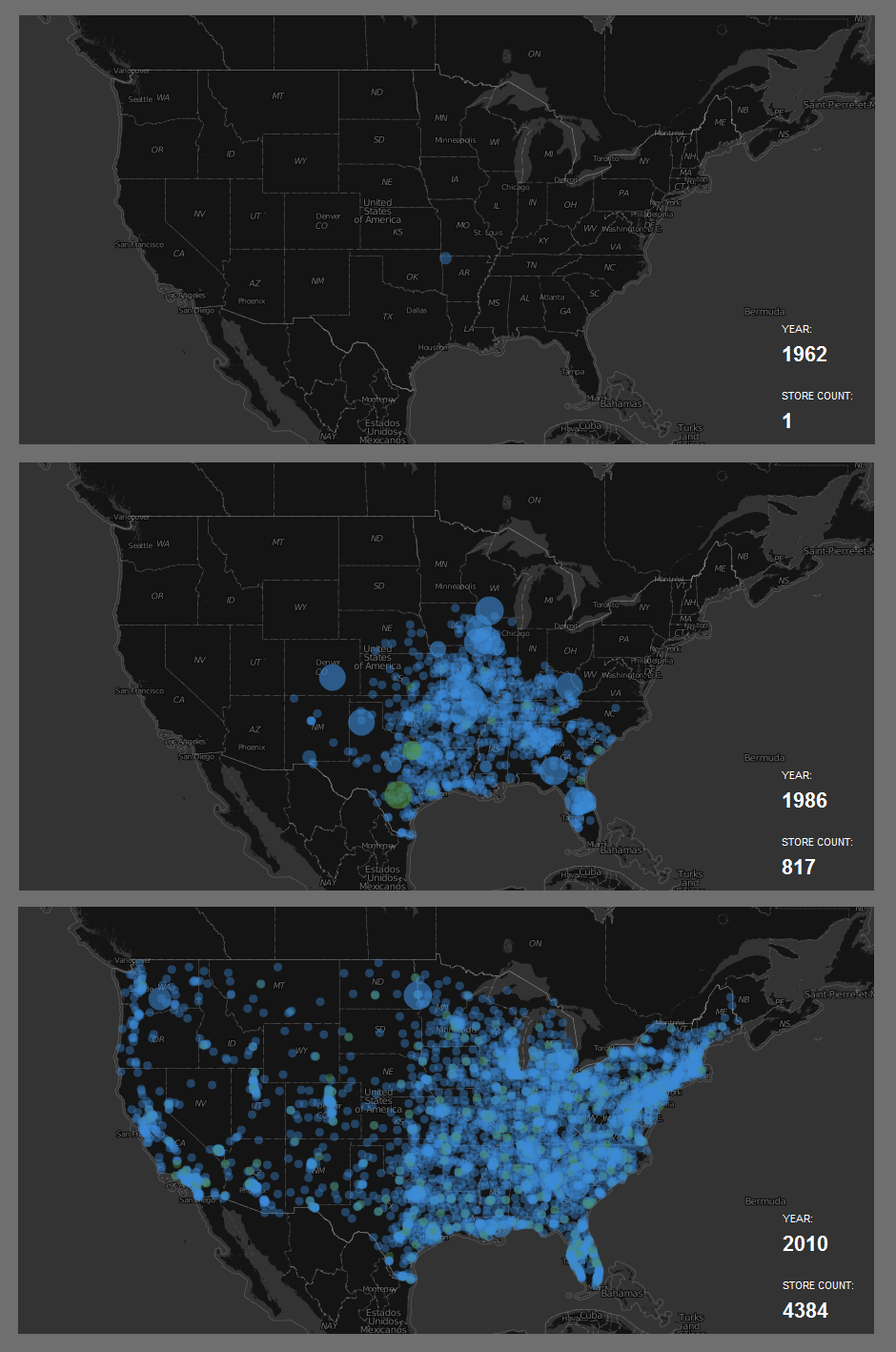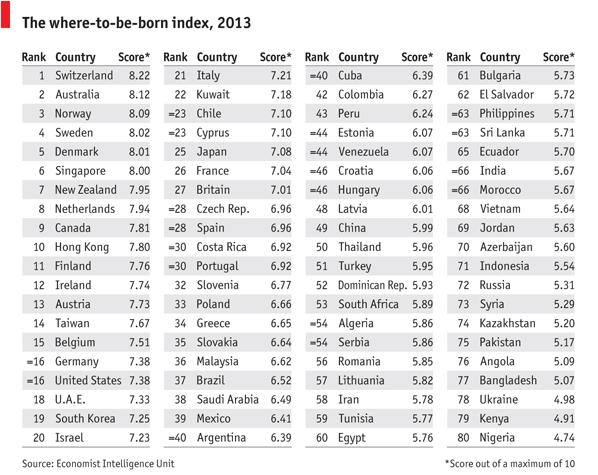 According to a World Gold Council report, world official gold reserves are estimated to be 31,575 tonnes as of January 2013. The United States ranks number one in official gold holdings with 8,133 tonnes. It is followed by Germany, the IMF (International Monetary Fund), Italy, France, China, Switzerland, Russia, Japan and the Netherlands. All other countries combined hold 7,325.5 tonnes in gold reserves. The countries in that group include India, Taiwan, Portugal, Venezuela, Saudi Arabia and Turkey. The Euro area holds 10,783 tonnes in gold reserves.
According to a World Gold Council report, world official gold reserves are estimated to be 31,575 tonnes as of January 2013. The United States ranks number one in official gold holdings with 8,133 tonnes. It is followed by Germany, the IMF (International Monetary Fund), Italy, France, China, Switzerland, Russia, Japan and the Netherlands. All other countries combined hold 7,325.5 tonnes in gold reserves. The countries in that group include India, Taiwan, Portugal, Venezuela, Saudi Arabia and Turkey. The Euro area holds 10,783 tonnes in gold reserves.
Resource Investor reports that central banks increased their official gold holdings to 500 tonnes in 2012 from 465 tonnes in 2011.
Resources:
- Gold World Council: Government Affairs- Reserves
- Resource Investor: Central Bank Gold Purchases to Top 500 Tons This Year
- Business Insider: Money Game – 10 Countries Hoarding Enormous Stockpiles Of Gold









